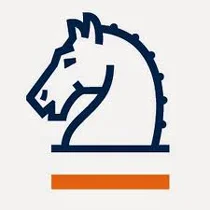دانلود ترجمه مقاله خواص مکانیکی یک سازه پرچ شده با پرچ الکترومغناطیسی
| عنوان فارسی |
ارزیابی تجربی خواص مکانیکی یک سازه پرچ شده با پرچ الکترومغناطیسی |
| عنوان انگلیسی |
Experimental evaluation on mechanical properties of a riveted structure with electromagnetic riveting |
| کلمات کلیدی : |
پرچ الکترومغناطیسی؛ ارزیابی تجربی؛ ریزسازه؛ خواص مکانیکی |
| درسهای مرتبط | مهندسی مکانیک |
| تعداد صفحات مقاله انگلیسی : 12 | نشریه : Springer |
| سال انتشار : 2015 | تعداد رفرنس مقاله : 17 |
| فرمت مقاله انگلیسی : PDF | نوع مقاله : ISI |
|
پاورپوینت :
ندارد سفارش پاورپوینت این مقاله |
وضعیت ترجمه مقاله : انجام نشده است. |
1. مقدمه 2. روش و مواد تجربی 3. نتایج و بحث و بررسی 4. نتیجه گیری

چکیده – در این مقاله، ارزیابی تجربی خواص مکانیکی یک سازه پرچ شده با پرچ الکترومغناطیسی انجام شد. تاثیر پرچ بر خواص مکانیکی و تحول ریز سازهای با کنترل تغییر شکل مورد بررسی قرار گرفت. امکان جایگزین کردن یک سازه محکم شده به وسیله پرچ با یک سازه محکم شده به وسیله پیچ (بولت) تجزیه و تحلیل و مقایسه بررسی شد. نتایج نشان داد که لغزش جابجایی در نوار برشی بی دررو، مکانیزم تغییر شکل اصلی دم پرچ را نشان میدهد. دم پرچ به طور عمده قدرت کشش و حالت شکست سازه متحرک را تعیین کرد و ارتفاع بهینه دم در این سازه پرچ شده ۵۶ میلی متر بود. بیشترین بار تحمل تستهای برش و تستهای کششی (pull-out) به ترتیب ۲۳.۳ و ۳۵.۰ کیلو نیوتن بودند. هر دو مقاومت برشی و مقاومت کششی سازههای متحرک از سازههای پیچ شده تجاوز کردند، که در آن پیچ ظرفیت کششی برابری با شفت پرچ دارد دارد. در مقایسه با ساختار پیچ شده، مقادیر نسبت بار به وزن سازه ثابت برای تست برش و تست کشش به ترتیب با ۲۲.۶۴ و ۶۶.۱۰ % بهبود یافتند. نتیجهگیری: • ابعاد دم پرچ عملاً هیچ تاثیری بر مقاومت برشی یک سازه ثابت بعد از تشکیل یک دنباله پرچ نداشت. اما بعد به طور قابلتوجهی مقاومت کشش و حالت شکست سازههای پرچ شده را مشخص کرد. ارتفاع بهینه دم پرچ، ۵۶ میلی متر برای Φ پرچ آلومینیومی 10-2A10 بود. • برش بی دررو مکانیزم تغییر شکل اصلی دم پرچ در طول فرآیند EMR است. باندهای برشی بی دررو (ASBs) یک ویژگی مهم ریز سازه بودند. شدت تغییر شکل در نقطه مورب شروع شد و به تدریج در مرکز گسترش یافت چون کرنش به صورت تجمعی و در مرکز افزایش یافت. تکامل ریزسازه به عنوان لغزش جابجایی ارائه شد. • در مقایسه با سازههای پیچ شده Φ6 – میلی متر ۳۰ CrMnSi پیچ دار، دو سازه پرچ شده Φ10 mm - -2A10 نه تنها ویژگیهای مکانیکی اتصال را بهبود میبخشند، بلکه منجر کاهش وزن نیز میشوند. مقادیر نسبت بار به وزن برای تستهای برش و تست کشش به ترتیب با ۲۲.۶۴ و ۶۶.۱۰ % بهبود یافتند.
Evaluation on mechanical properties of a riveted structure with electromagnetic riveting was performed experimentally in this work. The effect of rivet tail dimension on mechanical properties and microstructure evolution were investigated by controlling deformation. The possibility of substituting a riveted structure for a bolted structure was explored by the contrast analysis. Results showed that dislocation slip in the adiabatic shear band was a main deformation mechanism of rivet tail. The rivet tail dimension mainly determined pull-out strength and failure mode of the riveted structure, and the optimal height of rivet tail was 5∼6 mm for this riveted structure. The maximum bearing loads of shear tests and pull-out tests were 23.3 and 35.0 kN, respectively. Both shear strength and pull-out strength of riveted structures exceeded that of bolted structures, where the bolt has similar tensile-loading capacity as the rivet shaft. In contrast to the bolted structure, the load-to-weight ratio values of the riveted structure for shear test and pull-out test were improved by 22.64 and 66.10 %, respectively. Conclusions: • The rivet tail dimension had virtually no effect on the shear strength of a riveted structure after the formation of a rivet tail. But the dimension significantly determined the pull-out strength and failure mode of riveted structures. The optimal height of a rivet tail was 5∼6 mm for Φ the 10-2A10 aluminum alloy rivet. • Adiabatic shearing is a main deformation mechanism of the rivet tail during EMR process. Adiabatic shear bands (ASBs) were an important characteristic of microstructure. The shear deformation concentration began at diagonal point and gradually spread to the central as strain continued to accumulate and encountered in the central. Microstructure evolution was presented as the dislocation slip. • Compared with Φ6 mm-30CrMnSi bolted structures, Φ10 mm-2A10 riveted structures can not only improve mechanical properties of joining structures but also realize weight reduction. The load-to-weight ratio values for shear tests and pull-out tests were improved by 22.64 and 66.10 %, respectively.


دیدگاهها
هیچ دیدگاهی برای این محصول نوشته نشده است.